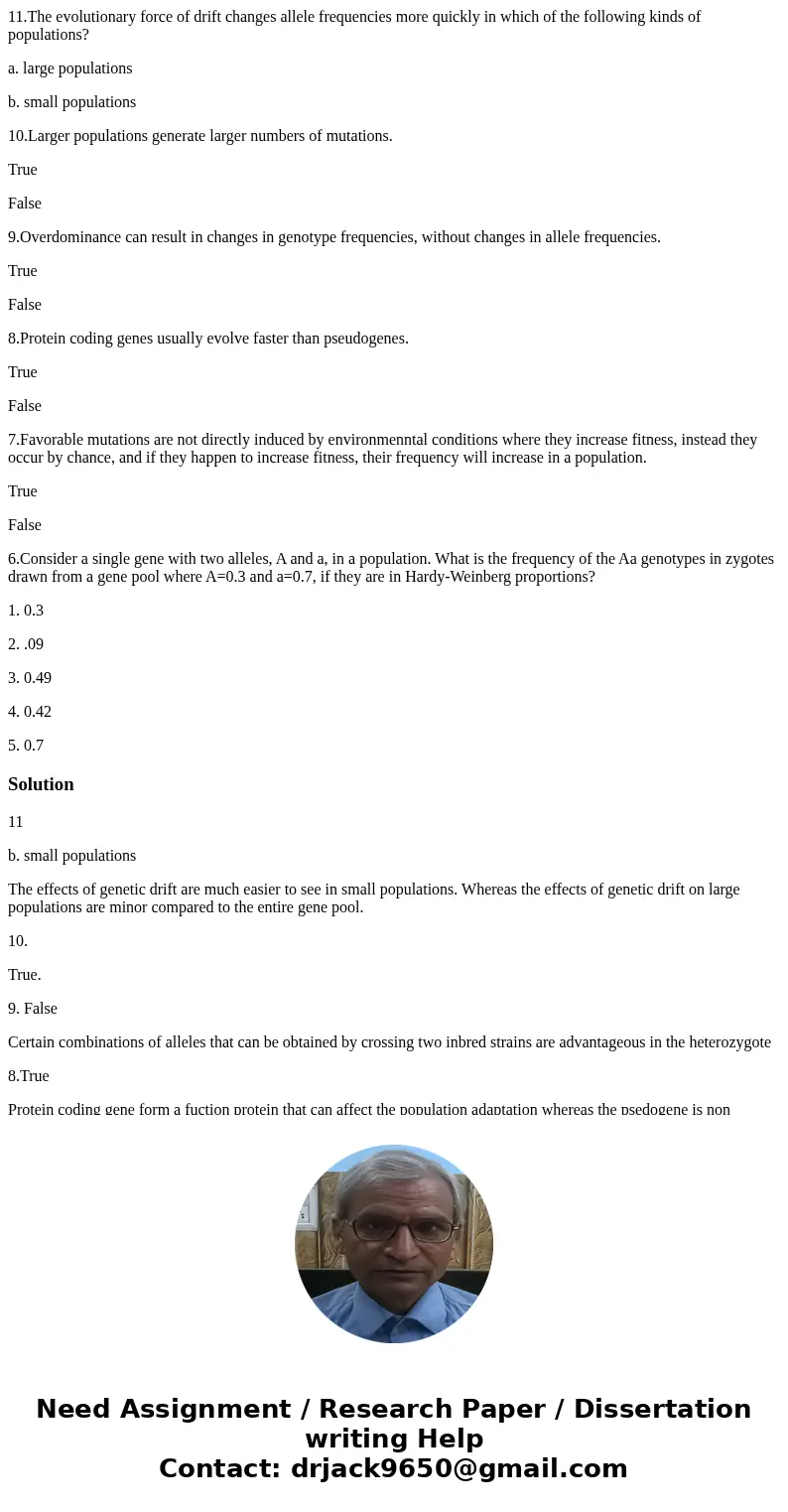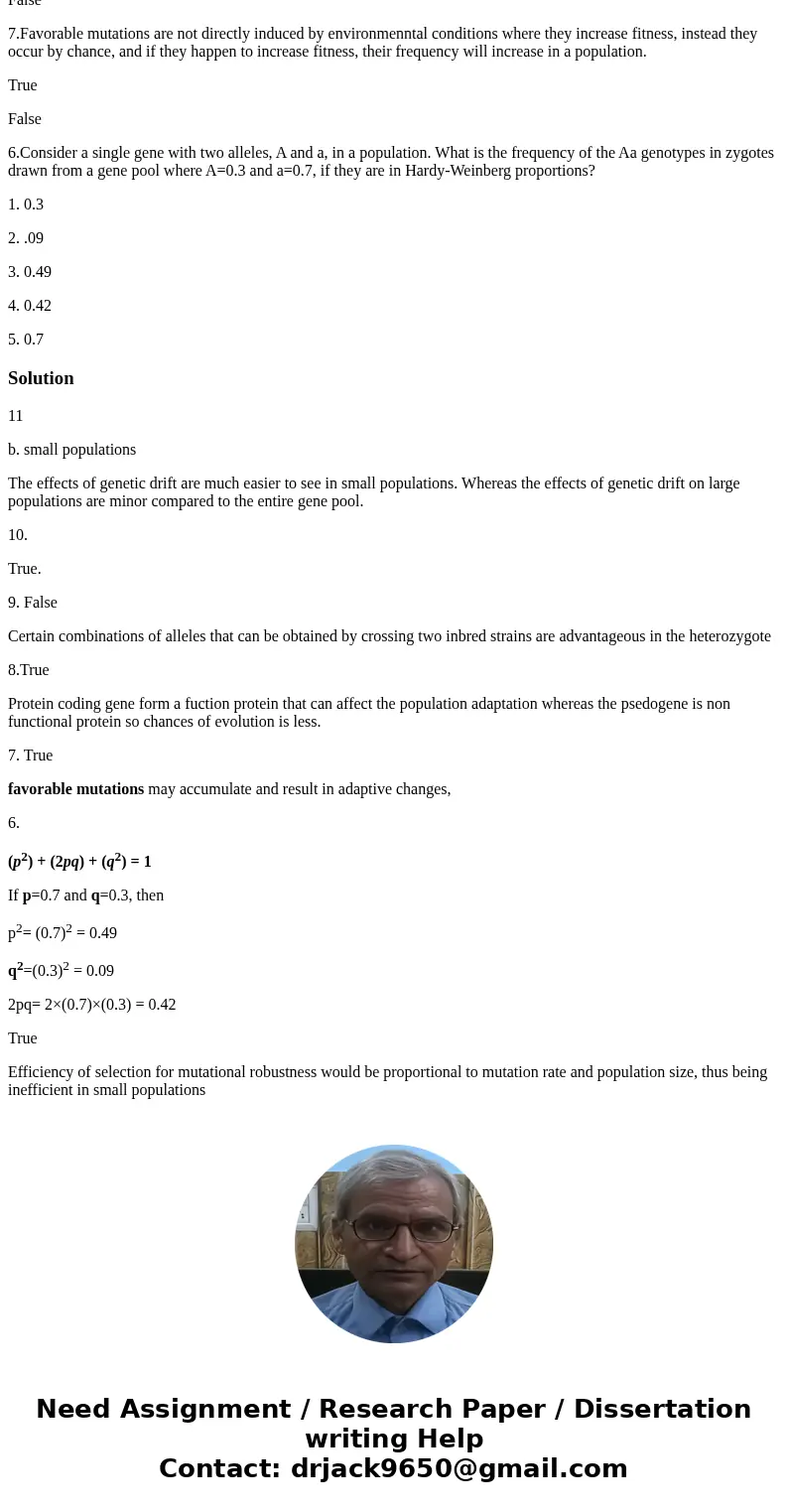11The evolutionary force of drift changes allele frequencies
11.The evolutionary force of drift changes allele frequencies more quickly in which of the following kinds of populations?
a. large populations
b. small populations
10.Larger populations generate larger numbers of mutations.
True
False
9.Overdominance can result in changes in genotype frequencies, without changes in allele frequencies.
True
False
8.Protein coding genes usually evolve faster than pseudogenes.
True
False
7.Favorable mutations are not directly induced by environmenntal conditions where they increase fitness, instead they occur by chance, and if they happen to increase fitness, their frequency will increase in a population.
True
False
6.Consider a single gene with two alleles, A and a, in a population. What is the frequency of the Aa genotypes in zygotes drawn from a gene pool where A=0.3 and a=0.7, if they are in Hardy-Weinberg proportions?
1. 0.3
2. .09
3. 0.49
4. 0.42
5. 0.7
Solution
11
b. small populations
The effects of genetic drift are much easier to see in small populations. Whereas the effects of genetic drift on large populations are minor compared to the entire gene pool.
10.
True.
9. False
Certain combinations of alleles that can be obtained by crossing two inbred strains are advantageous in the heterozygote
8.True
Protein coding gene form a fuction protein that can affect the population adaptation whereas the psedogene is non functional protein so chances of evolution is less.
7. True
favorable mutations may accumulate and result in adaptive changes,
6.
(p2) + (2pq) + (q2) = 1
If p=0.7 and q=0.3, then
p2= (0.7)2 = 0.49
q2=(0.3)2 = 0.09
2pq= 2×(0.7)×(0.3) = 0.42
True
Efficiency of selection for mutational robustness would be proportional to mutation rate and population size, thus being inefficient in small populations


 Homework Sourse
Homework Sourse